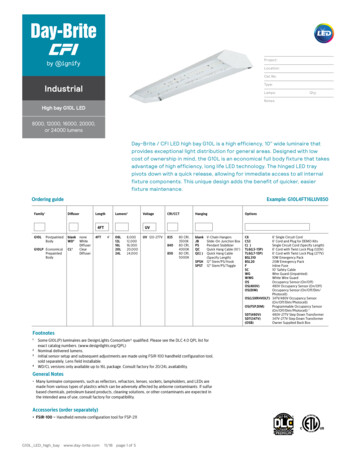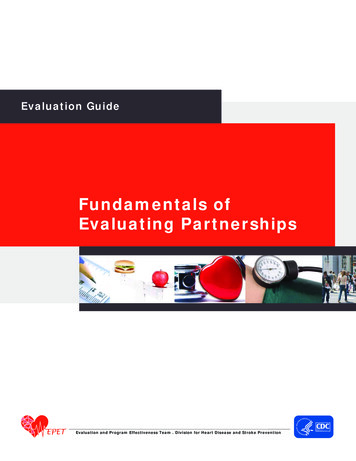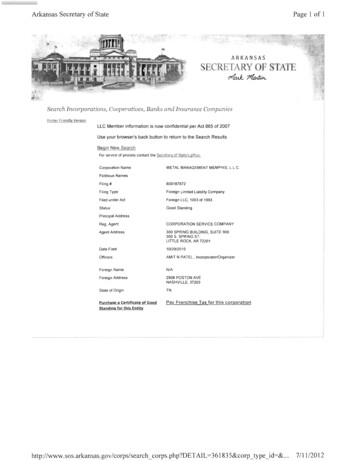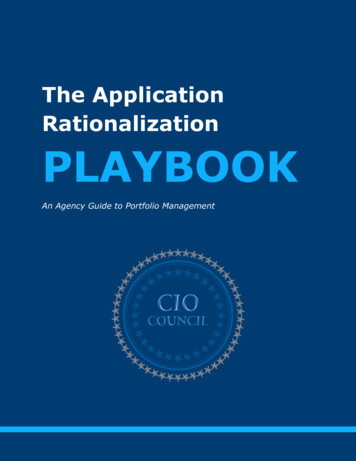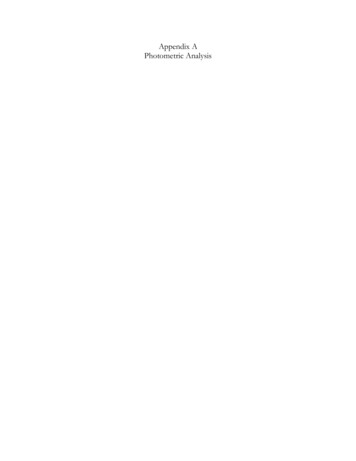
Transcription
Appendix APhotometric Analysis
This Page Intentionally Left Blank
330 N. Brand Blvd. Suite 950Glendale, CA 91203818.539.1111 www.exp.comFreeman StadiumField RenovationField Lighting RenovationPhotometric AnalysisProject NumberUSS-21009117Prepared By:Michael SchruppDate Submitted20 May, 2021
Freeman Stadium Field RenovationSports Lighting Photometric Analysisexp Project No. USS-2100911720 May, 2021TABLE OF CONTENTS1INTRODUCTION . 12PROJECT LOCATION . 13PROPOSED LIGHTING RENOVATION . 14SITE CONSIDERATIONS. 15CODES AND REGULATIONS . 26CODE ANALYSIS . 47CONCLUSION . 78APPENDIX . 8FIGURE 1 . 9FIGURE 2 . 10FIGURE 3 . 11FIGURE 4 . 12FIGURE 5 . 13FIGURE 6 . 14FIGURE 7 . 15ii
Freeman Stadium Field RenovationSports Lighting Photometric Analysisexp Project No. USS-2100911720 May, 2021NARRATIVE1INTRODUCTIONWe (exp engineering) have conducted a photometric review of the proposed renovation to California StateUniversity Monterey’s (CSUMB) Freeman Stadium for use by the Monterey Bay Football Club (MBFC) withspecific regard to the impact of the new high-mast sports lighting on the surrounding areas. This reportdetails the findings of the study and provides our conclusions and recommendations if any modifications areneeded to be made to the design.2PROJECT LOCATIONFreeman Stadium is a part of the greater Otter Sports Complex located at the south west corner of theCSUMB campus off General Jim Moore Blvd between Lightfighter Drive and Divartiy Street in the city ofSeaside in Monterey County, CA. The site is approximately 1/2 mile east of Highway 1 and 4 miles northeast of the city center.See Figure 1, Project Site Location3PROPOSED LIGHTING RENOVATIONAs part of the greater stadium renovation, the field lighting is to be upgraded with new poles and luminaires.The proposed layout consists of four (4) new 90’ tall high-mast poles, one at each corner of the stadium,each containing 46 LED flood lights aimed at the field surface below. The luminaires are all aimed at variouspositions on the playing field with the furthest and shallowest aiming angle being roughly 65 to the center ofthe field to the closest and steepest aiming angle being roughly 20 . See Figure 3, Field Lighting ProposalThe proposed luminaires are to have glare shields on the front of the fixture to mitigate direct view of theLEDs.Lower level, pedestrian-scale luminaires are also being added as a part of this renovation and it is proposedthat portable, temporary parking lot flood light towers will be employed for evening events. While these othersources will add to the illumination surrounding the stadium at night, their contribution will not be visible tothe surrounding community and therefore were not considered in any of the calculations for this report.4SITE CONSIDERATIONSCSUMB is located on the site of the former military base Fort Ord with the Otter Sports Complex andPage 1
Freeman Stadium Field RenovationSports Lighting Photometric Analysisexp Project No. USS-2100911720 May, 2021Freeman Stadium isolated in the south west corner of the campus. Most of the former base structures havebeen demolished leaving wide swaths of land between the stadium and community structures.The closest building to the site is the Veteran’s Administration building, a medical office complex located ona small hill above the stadium, roughly 580’ from the closest light tower. However, this office complex is nolonger in operation.The closest campus residences are approximately 1,800 feet northeast of the site, and the site is not visiblefrom this location due to topography and vegetation. The closest off-campus residential community view ofthe complex is located roughly .51 miles south which is bordered by large, dense canopy trees obstructingthe views to the north. The same is true for Highway 1. Any view to the sports complex and the stadium fromhighway traffic is obscured by groves of tall trees.The stadium itself sits several feet below grade, with the new high-mast poles mounting at that lower fieldlevel making the top of those poles roughly the same height as the existing poles around the adjacentbaseball field to the south and soccer fields to the south west.5CODES AND REGULATIONSThis section describes regulatory plans, policies, and ordinances related to lighting on the CSUMB campusor within the surrounding City of Seaside. As indicated in the following text, the California State University(CSU) does not have specific lighting policies or guidelines directing appropriate light levels (and spillover)from sports field or stadium lighting. As a result, although CSU as a state entity is not subject to local landuse regulations, the City of Seaside’s General Plan, the City’s Municipal Zoning Code, and the guidelines inCSU Outdoor Lighting Design Guide were reviewed to provide parameters for the analysis of light impactsresulting from the proposed outdoor lighting.California State University Outdoor Lighting Design Guide (2018)The Outdoor Lighting Design Guide provides CSU campuses with guidelines for outdoor lighting design toensure a comfortable nighttime environment, maximize energy efficiency, reduce light pollution, reduce glare,and improve campus aesthetics.The guide dictates that lighting designs follow the current State codes (Title 24/ CALGreen).Sports field lighting is not specifically addressed in this document.CSUMB Master Plan 2007 (Current)CSUMB’s 2007 Master Plan Campus Lighting Plan states that the “primary goal of most exteriorlighting is functional: to provide adequate light for safety and security.” The proposed lighting planwould be reviewed by Campus Police Department to ensure it meets safety concerns.Page 2
Freeman Stadium Field RenovationSports Lighting Photometric Analysisexp Project No. USS-2100911720 May, 2021CSUMB Master Plan 2017 (Draft)CSUMB’s lighting policy, based on the Draft 2017 Master Plan, is geared toward energy efficacy whileensuring safety and security on all walkways and parking areas. The most pertinent section to this projectfalls under section 9 regarding Daylighting Strategies and Lighting Technologies:LED lighting technologies have progressed rapidly in quality, color rendering, and cost effectiveness and arenow embedded in California’s Title 24 energy code. LEDs are therefore a requirement for new construction,and lighting loads as a fraction of total loads will decline. New buildings should take advantage of LEDlighting technologies. Existing buildings can also be retrofit for LED technologies, and this might beconsidered for an additional energy efficiency project. The UC CSU Energy Efficiency Partnership providesincentives for LED retrofits.California Title 24The California Lighting Technology Center’s 2019 Outdoor Lighting Guide for Title 24, Part 6, compliance isdesigned to help builders, lighting industry professionals, and others navigate the nonresidential outdoorlighting portion of the California’s Building Energy Efficiency Standards (CLTC 2016). The new standards,which took effect January 1, 2020, include updated requirements for retrofit standards, lighting controls, anduplight and glare limits. The guide includes an overview of updates to the 2019 standards, information aboutcurrent lighting technologies, and energy-efficient lighting strategies and principles. Explanations of criticalcode requirements for outdoor lighting and controls accompany best practice recommendations are alsoincluded.California Green Building Standards Code (CALGreen)The California Green Buildings Standards (2019), a subsection of California’s Title 24 code (Part 11)includes regulations for backlight, uplight, and glare. If the nearest property line is less than or equal to twomounting heights from the front hemisphere of the luminaire distribution, the applicable reduced glare ratingand reduced backlight rating regulations outlined within these standards shall be met. These ratings aredefined by Lighting Zones within the California Energy Code and California Administrative Code.Seaside General PlanThe current General Plan (2003) provides the direction for current and future development within the city. Amajor theme throughout the plan involves the protection of the natural environment, including the night sky.The plan includes the following directives specifically pertaining to lighting:Implementation Plan UD-2.2.1 Restrict Light and Noise ImpactsContinue to impose and enforce mitigation measures and operation requirements on new development toPage 3
Freeman Stadium Field RenovationSports Lighting Photometric Analysisexp Project No. USS-2100911720 May, 2021restrict construction and operation lighting and noise levels to regular work hours during the week and toacceptable times during the weekends.Implementation Plan COS-8.1.2 Design Guidelines for Exterior Light Sources.The City shall develop design guidelines that re-quire wherever possible that exterior light sources becontrolled and/or shielded to the downward direction so as not to glare or be directly visible beyond the limitsof the parcel.Additionally, the plan emphasizes the desire to protect the night sky environment for the continued successof the nearby Monterey Institute for Research in Astronomy (MIRA).Seaside Municipal CodeChapter 17 of the city’s Municipal Code identifies lighting regulations for outdoor development. Specifically,Section 17.30.070 Outdoor Lighting states that lighting on the site of a multi-family or nonresidential structureor use shall comply with the following requirements:Maximum height. A freestanding outdoor light fixture shall be limited to a maximum height of 16 feet,measured from adjacent normal grade to the top of the fixture(s). The fixture shall be considered to be thehighest portion of the light structure. When not located adjacent to a single-family residential zone, the Boardof Architectural Review may grant exceptions to the maximum height of freestanding outdoor light fixture(s)with the finding that the proposed height is consistent with surrounding land uses and is compatible with theexisting or proposed surrounding structures.Energy efficiency. Outdoor lighting shall utilize energy-efficient (high pressure sodium, low pressure sodium,hard-wired compact fluorescent, LED, or other lighting technology that is of equal or greater energyefficiency) fixtures and lamps.Position of light fixtures. All lighting fixtures shall be properly directed, recessed, and fully shielded (e.g.,downward and away from adjoining properties) to reduce light bleed and glare onto adjacent properties orpublic rights-of-way, by:1.Ensuring that the light source (e.g., bulb, etc.) is not visible from off the site; and2.Confining glare and reflections within the boundaries of the subject site to the maximum extent feasible.Maximum illumination. No lighting on private property shall produce an illumination level greater than onefoot-candle on any property within a residential zone except on the site of the light source.Backlighting, Uplighting and Glare (BUG) rating. All outdoor light fixtures are subject to the BUG rating limitsestablished by the California Energy Code (CALGreen 5.106.8) prior to the issuance of an electrical permit.No blinking, flashing, or high intensity. No permanently installed lighting shall blink, flash, flutter, or be ofunusually high intensity or brightness, or change light brightness, color, or intensity, as determined by theZoning Administrator.New light fixtures on commercial buildings. Installation of new light fixtures on commercial buildings shall bePage 4
Freeman Stadium Field RenovationSports Lighting Photometric Analysisexp Project No. USS-2100911720 May, 2021subject to review and approval by the Board of Architectural Review.6ANALYSISThe proposed project site, while isolated from the majority of other public buildings, is currently exposed tourban nighttime lighting. Artificial light sources found on site and in the surrounding area include existing interiorand exterior lighting at the Field House, high-mast sports lighting at the baseball and soccer fields and outdooraquatic center adjacent to the site, parking lot lighting, light along the adjacent walkways and streets, andilluminated automobile headlights. The site itself previously contained high-mast field lighting that is beingupgraded to the new locations with improved luminaires.The proposed project includes the installation of four energy-efficient lighting poles, with a mounting height of90 feet and 46 luminaries on each pole, to facilitate nighttime use of the field. These poles would be the primarysources of light for the field while other new lighting is associated with the proposed project. The lighting poleswould be implemented with Dark Sky-compliant LED fixtures with a fixed tilt based upon their calculated aimingangles. The poles would be mounted at the corners at the perimeters of the field to focus light directly on thefield and away from neighboring receptors. Field lighting for the proposed project would be turned on at fulloutput at dusk when needed for practice or games and would be switch off after the events with exact timesbeing determined by the duration of the usage.The CSU Outdoor Lighting Design Guide provides the CSU campuses with guidelines for outdoor lightingdesign to ensure a comfortable nighttime environment, maximize energy efficiency, reduce light pollution,reduce glare, and improve campus aesthetics. The guide contains CSU lighting design goals and strategies,lighting control strategies and methods throughout the campuses, and the mandated use of LED sources onnew luminaires for energy efficiency and ease of maintenance. The guide includes goals pertaining tocompliance with local codes, assurance of good nighttime visibility, low maintenance of lighting, energyefficiency, reduced light pollution, and integration into the overall campus aesthetic. As previously noted, sportsfield lighting is not specifically addressed in this document. Lighting design strategies are provided in the guideto aid in implementation of established lighting goals. Lighting design strategies are oriented toward creatingvertical surface brightness, enhancing navigation, minimizing glare, maintaining lighting uniformity, andproviding appropriate lighting levels (CSU 2018). The proposed lighting and operational schedule wouldensure that the field is illuminated as efficiently as possible and that campus uniformity is maintained in theproject vicinity.Regulations and restrictions with respect to lighting on the CSUMB campus are not strictly defined withincampus development and planning documents. The 2007 Master Plan and 2017 Draft Master Plan focus onbetter efficiency of all lighting throughout the university and should meet safety and security standards. WhenPage 5
Freeman Stadium Field RenovationSports Lighting Photometric Analysisexp Project No. USS-2100911720 May, 2021possible, outdoor light should be controlled by automatic timers, and the use of LED sources mandatory. Thedocuments do not identify strict lighting restrictions or regulations and does not have any specific lightingrequirements for CSUMB sports fields. The proposed LED source and shielding treatment and proposedoperational schedule would ensure that the field is being illuminated as efficiently as possible and that publicsafety is maintained during nighttime hours, respectively.Due to the lack of specific guidance for sports field lighting from the applicable CSU and Master Plan lightingguidelines, the City of Seaside’s Outdoor Lighting ordinance was reviewed (City of Seaside Municipal CodeSection 17.30.070). Although CSUMB is not subject to the City’s ordinances or regulations, the City’s MunicipalCode and Master Plan guidelines were reviewed to provide parameters for the analysis of light impacts.Although neither the City’s Municipal Code, nor the City’s Mater Plan provide numeric regulations specificallyfor sports field lighting, there are several regulations and restrictions for development of outdoor lighting thatcan be useful in the evaluation of the lighting impacts associated with the proposed project.The City’s Municipal Code (2020) states that outdoor lighting shall utilize energy-efficient (high pressuresodium, low pressure sodium, hard-wired compact fluorescent, LED, or other lighting technology that is ofequal or greater energy efficiency) fixtures and lamps. It further states that all lighting fixtures shall be properlydirected, recessed, and fully shielded (e.g., downward and away from adjoining properties) to reduce lightbleed and glare onto adjacent properties by ensuring that the light source is not visible from off the site andconfining glare and reflections within the site to the maximum extent feasible.The design of the field lightingfor the proposed project takes into account all available methods for reducing lighting spillover and glare. Thefield lighting poles would be arranged to focus the light directly on the field. The energy-efficient luminaireswould be at a mounting height of 90 feet, mitigating the direct glare in the pedestrian views within the immediatevicinity. The luminaires in this system will have a fixed downward angel to prohibit upward spill of the light andthe fixtures faces are shielded with a 20” long shield making the system Dark-Sky compliant.See Figure 3, Field Lighting ProposalThe City’s Municipal Code (2020) also states that, to the extent applicable, outdoor lighting should be incompliance with the California Energy Code and Green Building Regulations (CALGreen0. CALGreenstipulates that all luminaires must meet the mandated BUG (Backlight/Uplight/Glare) ratings per theirdesignated lighting zone unless otherwise exempt by Section 140.7 of the California Energy Code (Title 24) ofwhich Lighting for sports and athletic fields is exemption number 4. However, despite being exempt, as shownin Figure 5, Sky Glow Study, the calculations show that the design does not produce any direct illumination at120’ or above the ground.The City’s Municipal Code (2020) states that all lighting shall direct, shield, and control light to keep it fromfalling onto surrounding properties, and no direct-beam illumination shall leave the premises. As shown inFigure 2, Distance to Nearest Sensitive Receptors, the closest campus residences are more than 1,800 feetPage 6
Freeman Stadium Field RenovationSports Lighting Photometric Analysisexp Project No. USS-2100911720 May, 2021(.34 miles) northeast of the site, while the closest private residential neighborhood is located approximately ½mile south of the site. In addition, the proposed residential areas within the approved Campus Town SpecificPlan Project, located south of Lightfighter Drive in the City of Seaside, are located over 950 feet from thenearest lighting pole. And as shown in Figure 4, Light Spill Summary, at 250’ from the stadium (pole locations),there would be little to no spillover light. Therefore, the gross majority of the light would be directed to the fieldand would be shielded from all surrounding sensitive receptors.Since this project would be in compliance with applicable outdoor lighting guidelines and policies and wouldresult in minimal spillover, the increased light and glare would not be substantial for and public viewers at night.Because the proposed project would not create a new source of substantial light or glare in the area, impactswould be less than significant.7ConclusionEXP has reviewed all of the University, State, and local outdoor lighting codes, ordinances, andrecommendations as they pertain to the proposed upgrade to the Freeman Stadium field lighting upgrade.We find that neither the pedestrian scale luminaires nor any of the temporary parking towers will emit lightbeyond the immediate site and if properly shielded will not contribute to any upward light pollution. As for thenew stadium towers, the update to well-shielded LED luminaires with fixed downward aiming to only illuminatethe field below, we find that there will be no significant visual impact on the surrounding community and thatthe system being proposed meets the environmental goals of mitigating sky glow from light shining above 90 nadir, into the night sky.This report, prepared by exp Services Inc., is intended for the exclusive use of the California State UniversityMonterey Bay, Monterey FC, and Denise Duffy & Associates. Neither exp Services Inc the California StateUniversity Monterey Bay, Monterey FC, and Denise Duffy & Associates assume any liability for the use ofthis report, or for the use of any information disclosed in the report, or for damages resulting from the use ofthis report, by other parties.Page 7
Freeman Stadium Field RenovationSports Lighting Photometric Analysisexp Project No. USS-2100911720 May, 2021Figure 1, Project Site LocationPage 9
Freeman Stadium Field RenovationSports Lighting Photometric Analysisexp Project No. USS-2100911720 May, 2021Figure 2, Distance to Nearest Sensitive ReceptorsPage 10
Freeman Stadium Field RenovationSports Lighting Photometric Analysisexp Project No. USS-2100911720 May, 2021Figure 3, Field Lighting ProposalPage 11
Freeman Stadium Field RenovationSports Lighting Photometric Analysisexp Project No. USS-2100911720 May, 2021Figure 4, Light Spill SummaryPage 12
Freeman Stadium Field RenovationSports Lighting Photometric Analysisexp Project No. USS-2100911720 May, 2021Figure 5, Sky Glow StudyPage 13
Freeman Stadium Field RenovationSports Lighting Photometric Analysisexp Project No. USS-2100911720 May, 2021Figure 6, Proposed Filed Lighting LuminairePage 14
Freeman Stadium Field RenovationSports Lighting Photometric Analysisexp Project No. USS-2100911720 May, 2021Figure 7, Similar Installed Examples of Proposed High-Mast Lighting Systemby TechlinePage 15
Freeman Stadium Field RenovationSports Lighting Photometric Analysisexp Project No. USS-2100911720 May, 2021Page 16
This Page Intentionally Left Blank
that portable, temporary parking lot flood light towers will be employed for evening events. While these other sources will add to the illumination surrounding the stadium at night, their contribution will not be visible to the surrounding community and therefore were not considered in any o





